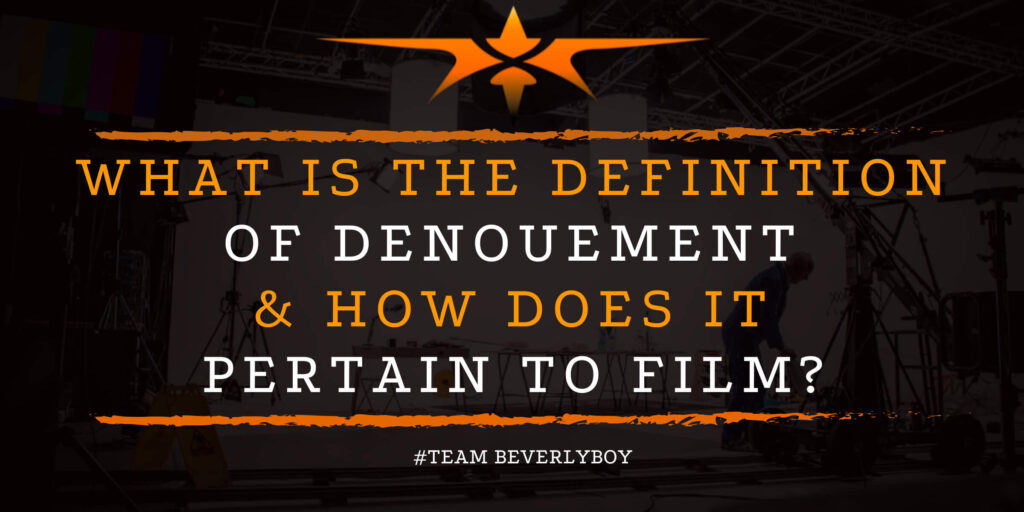What is the Definition of Denouement & How Does it Pertain to Film?
As a script or screenwriter, one of the most important elements to understand when it comes to composing a narrative is the denouement. In fact, a narrative without a denouement is incomplete. Lacking the underlying context required. In order for the theme or overall relationship and events in the story to make sense. But what is the definition of denouement? And how does it apply to film?

As we look to create a definition of denouement that properly defines this incredibly important term and its purpose in screenwriting, we’ll uncover the foundation of storytelling and how literary elements like denouement form the basis of a strong narrative.
What is Denouement?
Denouement is a word with French roots which technically means “unknotting” or unraveling of something. In the simplest definition of denouement as it applies to screenwriting.
Basically the denouement represents the knotting of the story. But, that doesn’t make much sense, a story isn’t a knot?
Think of denouement as an element of the narrative that actually provides a clue or some insight to the context and resolution of an underlying theme, relationship, or event that took place in the story.
The denouement represents the various strands or pieces of the puzzle, all coming together. Thus solving the chain of events or otherwise clarifying the relationship. So that the matters that took place in the story are resolved, explained, or otherwise made clear.
A Means to an End
In other words, the denouement represents the final outcome of a primary, dramatic complication that was part of your narrative. Remember how we said that a narrative is incomplete without a denouement?
Basically, without a denouement, the narrative would sort of just keep going, endlessly, because there would not be any resolution, or final outcome or there would not be a “closure” of sorts, that made the various plot strands of the story come together and “make sense.”
Explicit vs Implicit Denouement
The denouement is important because it basically provides a resolution to all of the plot “issues” such as the relationships, the series of events, or the underlying theme, in the end of the story.
It represents the unraveling of the complexities of the plot, in which everything finally makes sense, and the conflict is finally resolved. But there are two forms of denouement in film: explicit denouement and implicit denouement.
Action VS Inaction
Denouement puts everything in order. So that the underlying sentiment or theme of the story can resonate with the audience.
Denouement may be explicit, such that the action gives a resolution to an essential aspect of the story. Explicit denouement leaves no question or potential room for confusion in the narrative.
Implicit denouement represents another means of providing a resolution in the story. But unlike explicit denouement which relies on action to provide the resolution, implicit denouement relies on inaction.
You might recall implicit denouement in films where the resolution is given in a metaphor, or implied.
Tying Up Loose Ends
There could be some confusion, unlike in the explicit denouement where there’s really no question, implicit denouement might be a little bit more difficult to connect the pieces and pull the strands together.
Whether implicit or explicit, the definition of denouement in film is heavily centered around the use of the denouement to clear up loose ends and provide a final resolution that offers a final outcome after the climax of the story.
Secrets unravel. Loose ends tie up up. The character relationships reach a resolution. This is denouement in film.


